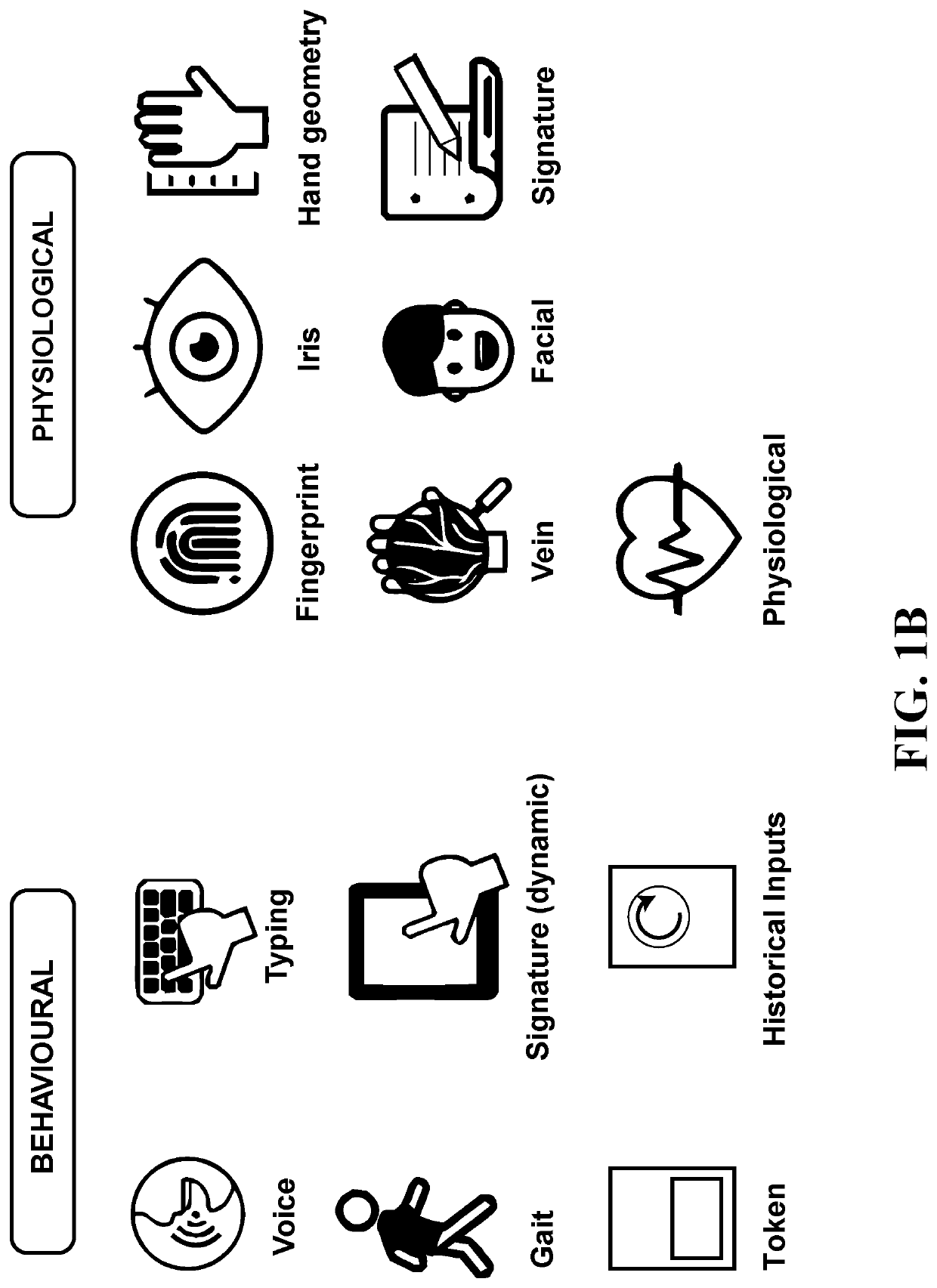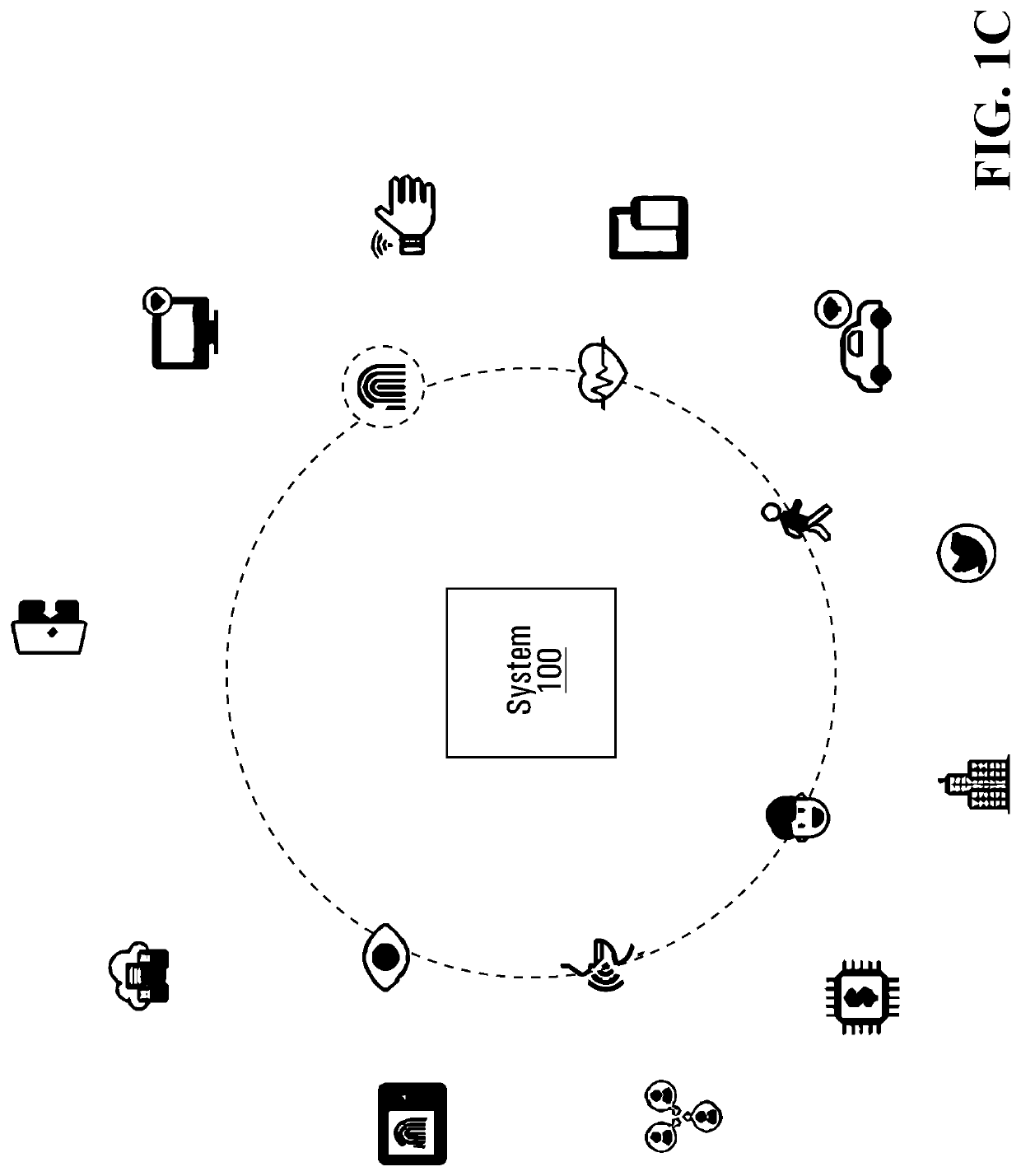Biometric identification platform
a biometric identification and verification platform technology, applied in the field of biometric identification or verification platforms, can solve the problems of not flexibly adapting to changing circumstances, not robust or dynamic, and existing access control and other identity verification systems are difficult to implement, so as to reduce the baseline confidence contribution score
- Summary
- Abstract
- Description
- Claims
- Application Information
AI Technical Summary
Benefits of technology
Problems solved by technology
Method used
Image
Examples
Embodiment Construction
[0107]Embodiments of methods, systems, and apparatus are described through reference to the drawings.
[0108]The following discussion provides many example embodiments of the inventive subject matter. Although each embodiment represents a single combination of inventive elements, the inventive subject matter is considered to include all possible combinations of the disclosed elements. Thus if one embodiment comprises elements A, B, and C, and a second embodiment comprises elements B and D, then the inventive subject matter is also considered to include other remaining combinations of A, B, C, or D, even if not explicitly disclosed.
[0109]Biometric devices and biometric modalities utilize a variety of interfaces and software development kits (SDKs). There is a large diversity in the types of products and services available, including in respect of their characteristics, platforms, and protocols. Biometric modalities are intrinsically related to the identity of an individual or group of ...
PUM
 Login to View More
Login to View More Abstract
Description
Claims
Application Information
 Login to View More
Login to View More - R&D
- Intellectual Property
- Life Sciences
- Materials
- Tech Scout
- Unparalleled Data Quality
- Higher Quality Content
- 60% Fewer Hallucinations
Browse by: Latest US Patents, China's latest patents, Technical Efficacy Thesaurus, Application Domain, Technology Topic, Popular Technical Reports.
© 2025 PatSnap. All rights reserved.Legal|Privacy policy|Modern Slavery Act Transparency Statement|Sitemap|About US| Contact US: help@patsnap.com



